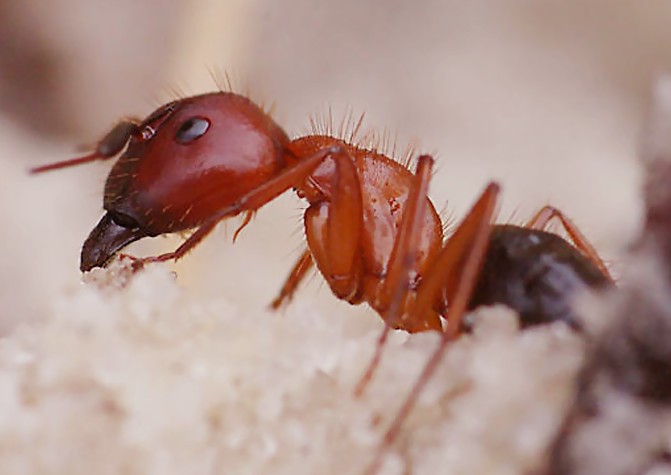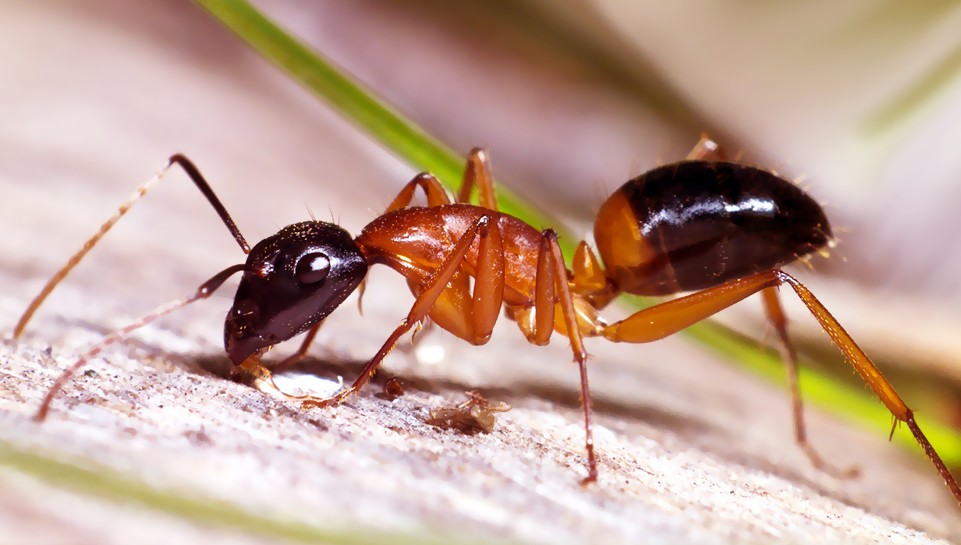Bull Ants
What are Bull Ants?
Bull Ants are one of the most interesting ant species found in almost every nook and cranny of the world. These ants are different from any other species of ants in diverse ways, which include size as well as behavior. A bull ant is regarded as a difficult critter to deal with; thus, it’s important that you learn as much as you can about these terrifying little creatures and what risks they may create for you and your loved ones.

Picture of Bull ants
Bull ants are also known by other names like:
- Bulldog Ants
- Giant Bull Ants
- Inch Ants
- Red Bull Ants
- Jumper Ants
- Sergeant Ants.
Well, nearly 90 species of bulldog ants can be found in Australia displaying signs of diverse behaviors and life cycles. In reality, nine of the species have been discovered in Sydney as of now. However, there are a lot that are yet to be brought to light. There are some of the smaller species of these ants, which are called jumper ants. This name has been derived from their habit of taking a jump toward intrude in a more aggressive way.
Bull ants, a native of Australia, are unquestionably one of the world’s most remarkable ants and as far these species of ants go, they are the giants in every sense of the word. Being the largest in the country, there are not many ant species that can match up to bulldog ants. Although there are around 100 diverse species of these ants, one of them is very common in Australia.
Aside from their striking size, the behavior is one of the things that make bull ants differ from other species. Being exceptionally aggressive, they are known to attack large ants and sink their teeth into humans for defending themselves. Their eyesight is simply incredible, and it lets them hunt their prey from distances up to 3 feet. Now, you know what these ants are capable of doing.
There’s no denying the fact that the arrival of the summer is a signal to tend to a garden not taken care of in months. However, it could also mean getting up close and personal with one of the most intriguing species of ants in the world – the bull ants. Anyone who’s had the misfortune of being stung by one of them would be in a better position to tell you that this ant is not to be taken lightly. In fact, they are a big pain to deal with.
Appearance and Identification
Let’s know something about the appearance of bull ants, shall we?

As mentioned above, bull ants or jumper inch can grow up to 40 mm in size. These ants have robust forceps that they used for the purpose of not only hunting their prey but also keeping their nest safe and secure. Both fertile males and females have wings, whereas sterile female bull ants are workers.
These horrible little critters are alert, massive ants that grow up to 40 mm or an average of an inch long. These creatures carry a frightening reputation to live up to, and they truly deserve that. Apart from the ability to not only track but even follow intruders from a metre distance, they are blessed with excellent vision.
Any idea what’s the biggest difference between bulldog ants and not so uncommon ant species? It’s got to be their size and appearance. Hands down! Bull ants – one of the most fearsome ants nobody would even think of dealing with – grow as large as 1 inch or 40 mm.
Not only do these insects have red coloring, but they also have a larger body, as compared to common ants we see crawling around in our houses. If truth be told, many of them bear a resemblance to wasps (of course, with no wings), due to their common lineage.
These ants are clad in big, strong and extended mandibles with black and some red color on the abdomen. Their massive size (40 mm) is what makes them a real giant in the ant world.
Where do Bull Ants live?
As mentioned, bull ants are most common in Australia. People have even caught sight of these terrible little critters in metropolises like Sydney. They usually reside in woodland areas as well as forests. Simply put, these ants gather in those areas where the food source can be found in abundance.
While there are some species of bull ants (also referred to as hopper ants) that make their home in the same way as other common ants, others seem to have no workers ants; not even a single one. As an alternative, these giants will damage and enter other ant colonies by force, so that they can eliminate the queen before taking over the hill. So, if you happen to take notice of or have an encounter with a red bull ant somewhere near your home, you must not waste time because doing so will seem more like an invitation to these creatures. You don’t want them to take shelter in your house, do you?
What do Bull Ants Eat?
Bull ants usually feed on other small insects and honeydew (a sugary, sticky liquid found on leaves). Besides eating honeydew, they also consume fungi, nectar, fruit, gums and seeds. Since these species of ants primarily live completely in bushland, they are hardly exposed to a diet influenced by humans.
The adult members eat honeydew as well as nectar, but the ant larvae are carnivores that feed on small insects, which are brought to them by worker ants known for their hunting ability. The workers can, in fact, regurgitate food back to the nest allowing other ants to have it.
Bull Ant Sting (Symptoms and Treatment)

Bull ants or bulldog ants are immensely known for their aggressive behaviour. Their sting is extremely powerful. And, the venom produced by them has the potential to cause anaphylactic shock in the victims that are allergic to ant stings. If the allergic reaction is severe, it can prove fatal, if left untreated.
Nobody finds it hard to forget an encounter with these terrifying ant species, especially if they sting. Their big and bold nature makes them one of the most aggressive and fearsome creatures found in Australia.
Capable of delivering awfully agonizing stings, these ants are a real danger to human beings. If stung, one can consider using an ice pack to alleviate the pain caused by the sting. Or, they can get relief with the use of a commercial spray. If you think there’s strong evidence of an allergic reaction, consult your doctor right away for much-needed medical attention.
There are a handful of natural remedies that must be considered, should you get stung by a bulldog ant. It will be good if you have a pigface groundcover cultivating around the corner. Take a few leaves and crush the juice from the leaves. Place it on the affected (stung) area. Now, rub in soothingly and you will get relief from the pain instantly. These are some of the natural remedies that show their true colours when applied right away (possibly within a minute or two). You can even get an ointment from the chemist to get rid of the pain as well as swelling.
Getting Rid of Bull Ants
Being one of the most brutal and fearsome ant species in the world, bull ants have frequently been causing harm to humans resulting in great frustration when they gain access to one’s home. If you think bulldog ants have invaded your house, call in professional pest control experts to eliminate these giant ants once and for all.
Thinking of getting rid of bull ants?
It is important for you to know that eliminating these unwelcome and horrible creatures is not an easy thing to do. In fact, destroying their nest is unsafe. Why? This is because their stings are poisonous and can prove fatal for humans if several stings occur. That’s where professionals step into the picture. They are the ones who can destroy their colony as well as the nest.
Bull Ants Nest
The nests of these bull ants are located underground in the soil. Also, their nests can be found in the backyard or even underneath your house. Know that a single bulldog ant queen has the ability to construct 14 different colonies. As the nest expands underground, it makes it a lot difficult for you to eliminate the ants totally.
It’s time you become a DIY’er, if you cannot bear the sight of bull ants in your house anymore. Read on to find some DIY methods that will help you eradicate these ants and their nest.
- Using boric acid is a good idea, as it will help you eliminate these unwanted guests in your house.
- Make sure you pour boiling water down the nest.
- DON’T even think of pouring out oil down the nest and setting it on fire.
- A blend of borax and sugar will kill these ants. In fact, it’s the most nontoxic method used to control pests.
No doubt hiring in a professional to help you get rid of ants will be the smartest move you can make. They keep you and your loved ones out of harm’s way with their bespoke treatment plan that meets your needs. They use specialized methods to eliminate bull ants and their colony without having to pose a risk your family members, pets and the surrounding wildlife.
Bull Ants Pictures
Here are some of the pictures of bull ants:




Interesting Facts
Here is a list of some of the most interesting facts about bull ants:
- Bull ants are one of the most aggressive varieties of ants in the world, aside from being one of the largest too.
- It’s weird to know that if this creature is cut in two, its head and the tail will really engage in a battle to kill each other.
- Bulldog ants have lethal stings and large mandibles that cause severe excruciating pain in humans. This pain can last for many days.
- Even though ants have restricted vision, this is not the case with bull ants. They can set eyes on as well as spot their prey (the target) from about a meter away.
- It would not be wrong to state the fact that bull ants are among the world’s smartest ants. They can sting several times and use their mandibles not only for hunting purpose but to defend themselves.
